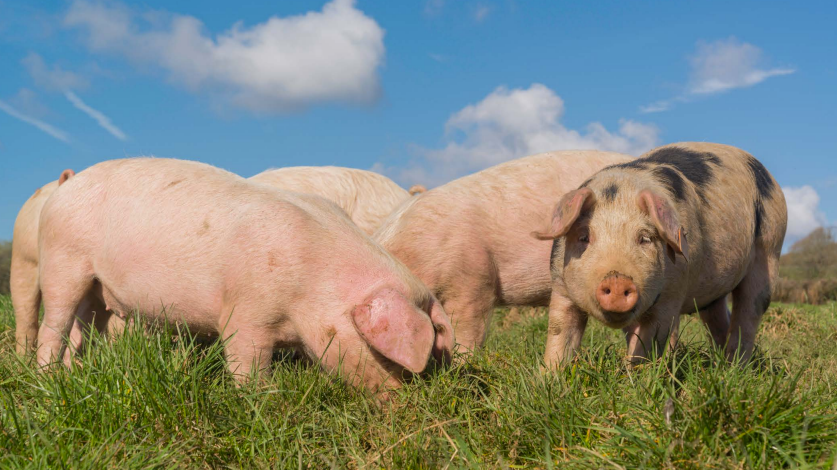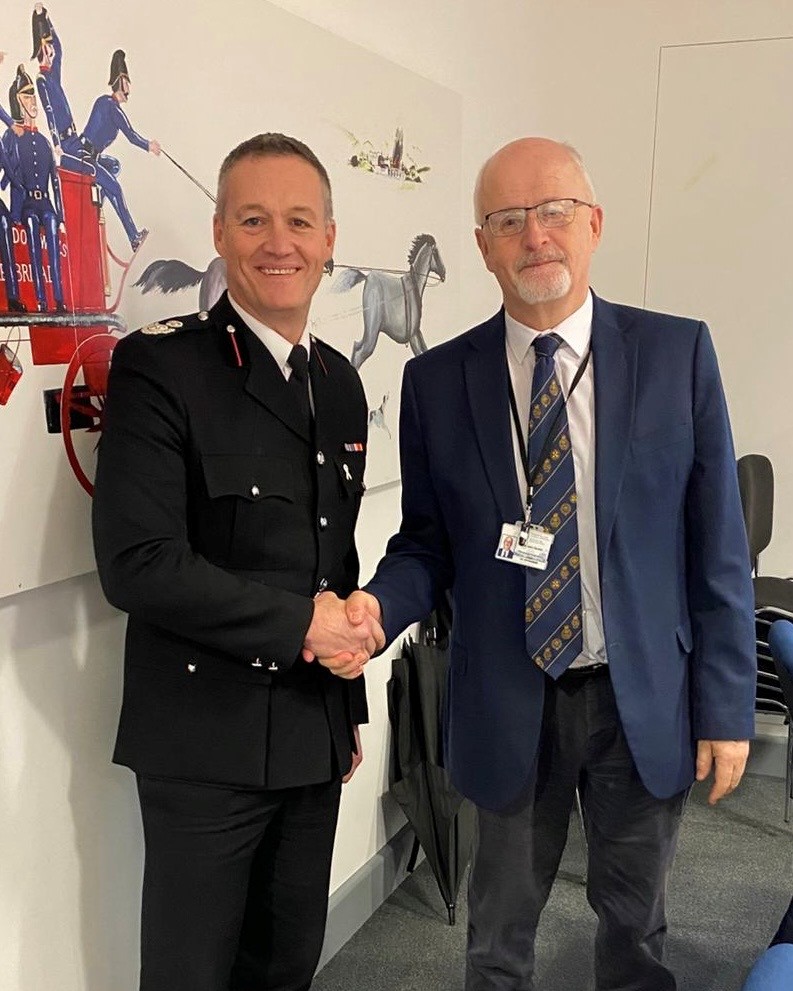News
Plan to achieve good quality of life for all animals in Wales published

A FIVE-YEAR plan which outlines steps towards achieving the ambition of ensuring a good quality of life for all animals in Wales will be published today by the Rural Affairs Minister Lesley Griffiths.
Our Animal Welfare Plan for Wales builds on what has already been achieved since the devolution of animal welfare powers in 2006.
It outlines how the Welsh Government will take forward its animal welfare commitments in its Programme for Government, and other measures to further improve animal welfare.
The plan also includes a broad range of ongoing animal welfare policy work, including statutory guidance for existing regulations, licensing of animal exhibits, welfare of animals in transport, and Codes of Practice. Finally, it describes how the Welsh Government will work collaboratively with the other UK governments to further the animal welfare agenda, for example through the forthcoming Animal Welfare (Kept Animals) Bill.
The Programme for Government commitments captured in the plan are:
To develop a national model for the regulation of animal welfare, introducing registration for animal welfare establishments, commercial breeders for pets or for shooting, and animal exhibits;
- To Improve the qualifications for animal welfare inspectors to raise their professional status;
- To require CCTV in all slaughterhouses;
- To restrict the use of cages for farmed animals.
- To mark the publication, the Minister will visit Greenmeadow Community Farm near Cwmbran.
Minister for Rural Affairs Lesley Griffiths said: “I’m very proud of what has already been achieved in Wales in animal welfare. But there is more to do. Our long-term ambition is for every animal in Wales to have a good quality of life. Today’s plan outlines steps towards achieving that ambition.
“We will work with all partners to take forward our commitments. This includes further boosting protection for pets by looking at registration of animal welfare establishments, enhancing the much-valued animal welfare inspection profession through improved qualifications, and looking at how we can minimise the use of cages for farmed animals.
“I’m also pleased to confirm that we will be requiring all slaughterhouses in Wales to have CCTV – while the vast majority already do we will ensure this is the case for all.
“Achieving a good quality of life for all animals is ambitious, but that is what we must aim for.”
Chief Veterinary Officer for Wales, Christianne Glossop said: “Well cared for animals are more often healthy and contented animals. Preventing disease and injury in the first place is always the better option. Having high animal welfare standards ensures their needs are met, whether they are companion animals or farmed livestock.
“The plan we are publishing today builds on what has already been achieved in the field of animal welfare, ensuring we continue to improve as we work towards the ambition of a good quality of life for all animals kept in Wales.”
Partnership working will be key to the success of the plan. A key component relates to the enforcement of current and future legislation and, in support of this, a Local Authority Enforcement Project, working in collaboration with Trading Standards Wales, is currently in its second year.
Strategic Lead and Trading Standards and Animal Health Manager for Monmouthshire County Council Gareth Walters has welcomed the plan. He said:
“The Local Authority Enforcement project has recently overseen the appointment of 8 new Animal Licensing Officers. They will offer crucial support required by Local Authority animal health services by providing a shared resource across Wales as a recognised point of expertise. The new officers will enable existing animal health officers to focus on wider animal health and welfare work.
“The forthcoming launch of an online information system may develop into a single point of reference for licence applications in support of the Welsh Government’s ‘National Model’ commitment, while the development of an animal licensing qualification will complement the Animal Health and Welfare professional qualification provided by the Chartered Trading Standards Institute launched earlier this year. These qualifications will provide the foundation which existing and future officers require to ensure knowledge and understanding, alongside access to specialised training where necessary”.
Community
Craig Flannery appointed as new Chief Fire Officer

MID AND WEST WALES FIRE SERVICE LEADERSHIP CHANGE
MID and West Wales Fire and Rescue Service has announced the appointment of Craig Flannery as its new Chief Fire Officer, with effect from Monday, December 15, 2025.
Mr Flannery has served with the Service for more than twenty years, progressing through a wide range of middle management and senior leadership roles across both operational and non-operational departments.
During his career, he has been closely involved in strengthening operational delivery, risk management and organisational development. His work has included leading innovation in learning and development, overseeing the Service’s On-Call Improvement Programme, and driving investment in key enabling functions such as workforce development and information and communication technology.

The appointment followed a rigorous, multi-stage recruitment process led by Mid and West Wales Fire and Rescue Authority. Candidates were assessed through structured interviews, strategic leadership exercises and scenario-based assessments designed to test operational judgement, organisational vision and the ability to lead a modern fire and rescue service.
External professional assessors were also engaged to provide independent scrutiny, ensuring the process met high standards of fairness, transparency and challenge.
Mr Flannery emerged as the strongest candidate, demonstrating clear strategic leadership capability, detailed organisational knowledge and a strong commitment to community safety and service improvement.
Councillor John Davies, Chair of Mid and West Wales Fire and Rescue Authority, said: “Craig brings a deep understanding of our Service and a clear vision for its future. His appointment will strengthen our ability to innovate, support our workforce and deliver high-quality protection for the communities we serve.
“As we navigate a rapidly changing landscape, Craig’s experience in driving innovation and organisational development will be invaluable in helping us adapt and transform for the future.”
Commenting on his appointment, Mr Flannery said: “It is a privilege to lead this outstanding Service. I am committed to supporting our people, strengthening partnerships and building on the strong foundations already in place.
“As the challenges facing fire and rescue services continue to evolve, we must modernise and innovate, ensuring we have the skills, technology and capability needed to meet the needs of our communities. I look forward to working with colleagues and partners across Mid and West Wales to deliver a resilient, progressive Service that keeps people safe and places our staff at the heart of everything we do.”
Health
Resident doctors in Wales vote to accept new contract

RESIDENT doctors across Wales have voted to accept a new contract, with 83% of those who took part in a referendum backing the agreement, according to BMA Cymru Wales.
The contract includes a four per cent additional investment in the resident doctor workforce and introduces a range of reforms aimed at improving training conditions, wellbeing and long-term workforce sustainability within NHS Wales. The BMA says the deal also supports progress towards pay restoration, which remains a central issue for doctors.
Key changes include new safeguards to limit the most fatiguing working patterns, measures intended to address medical unemployment and career progression concerns, and reforms to study budgets and study leave to improve access to training opportunities.
Negotiations between the BMA’s Welsh Resident Doctors Committee, NHS Wales Employers and the Welsh Government concluded earlier this year. Following a consultation period, a referendum of resident doctors and final-year medical students in Wales was held, resulting in a clear majority in favour of the proposals.
Welsh Resident Doctors Committee chair Dr Oba Babs Osibodu said the agreement marked a significant step forward for doctors working in Wales.
He said: “We’re proud to have negotiated this contract, which offers our colleagues and the future generation of doctors safer terms of service, fairer pay, and better prospects so that they can grow and develop their careers in Wales.
“This contract will help to retain the doctors already in training, and also attract more doctors to work in Wales, where they can offer their expertise and benefit patients.”
Dr Osibodu added that the BMA remains committed to achieving full pay restoration and acknowledged that challenges remain for some doctors.
“Whilst this contract sets the foundations for a brighter future for resident doctors in Wales, we recognise that there are still doctors who are struggling to develop their careers and secure permanent work,” he said. “We need to work with the Welsh Government and NHS employers to address training bottlenecks and underemployment.”
The Welsh Government has previously said it recognises the pressures facing resident doctors and the importance of improving recruitment and retention across NHS Wales, while also highlighting the need to balance pay agreements with wider NHS funding pressures and patient demand.
The new contract is expected to be phased in from August 2026. It will initially apply to doctors in foundation programmes, those in specialty training with unbanded rotas, and new starters, before being rolled out to all resident doctors across Wales.
Crime
Swansea man jailed for online child sex offence dies in prison

A SWANSEA man who was jailed earlier this year for attempting to engage in sexual communication with a child has died while in custody.
Gareth Davies, aged 59, of the Maritime Quarter, was serving an 18-month prison sentence after being convicted in May of sending sexually explicit messages to what he believed was a 14-year-old girl. The account was in fact a decoy used as part of an online safeguarding operation.
The court heard that Davies began communicating with the decoy between November and December 2024 and persistently pursued the individual, later attempting to arrange a face-to-face meeting. He was arrested after being confronted by the decoy operators.
Davies had pleaded not guilty but was convicted following a trial. At the time of sentencing, police described the messages as extremely concerning and said his imprisonment was necessary to protect children.
It has now been confirmed that Davies died at HMP Parc on Wednesday (Nov 27) while serving his sentence.
The Prisons and Probation Ombudsman has launched an independent investigation into the death, which is standard procedure in all cases where someone dies in custody. No cause of death has been released at this stage.
A coroner will determine the circumstances in due course.
-

 Crime2 days ago
Crime2 days agoMilford Haven man jailed after drunken attack on partner and police officers
-

 News5 days ago
News5 days agoDyfed-Powys Police launch major investigation after triple fatal crash
-

 Crime2 days ago
Crime2 days agoTeenager charged following rape allegation at Saundersfoot nightclub
-

 Crime3 days ago
Crime3 days agoMan charged with months of coercive control and assaults
-

 Crime4 days ago
Crime4 days agoMan sent to Crown Court over historic indecent assault allegations
-

 Crime5 days ago
Crime5 days agoMan spared jail after baseball bat incident in Milford Haven
-

 Crime3 days ago
Crime3 days agoMilford Haven man admits multiple offences after A477 incident
-

 Crime3 days ago
Crime3 days agoWoman ‘terrified in own home’ after ex breaches court order




















